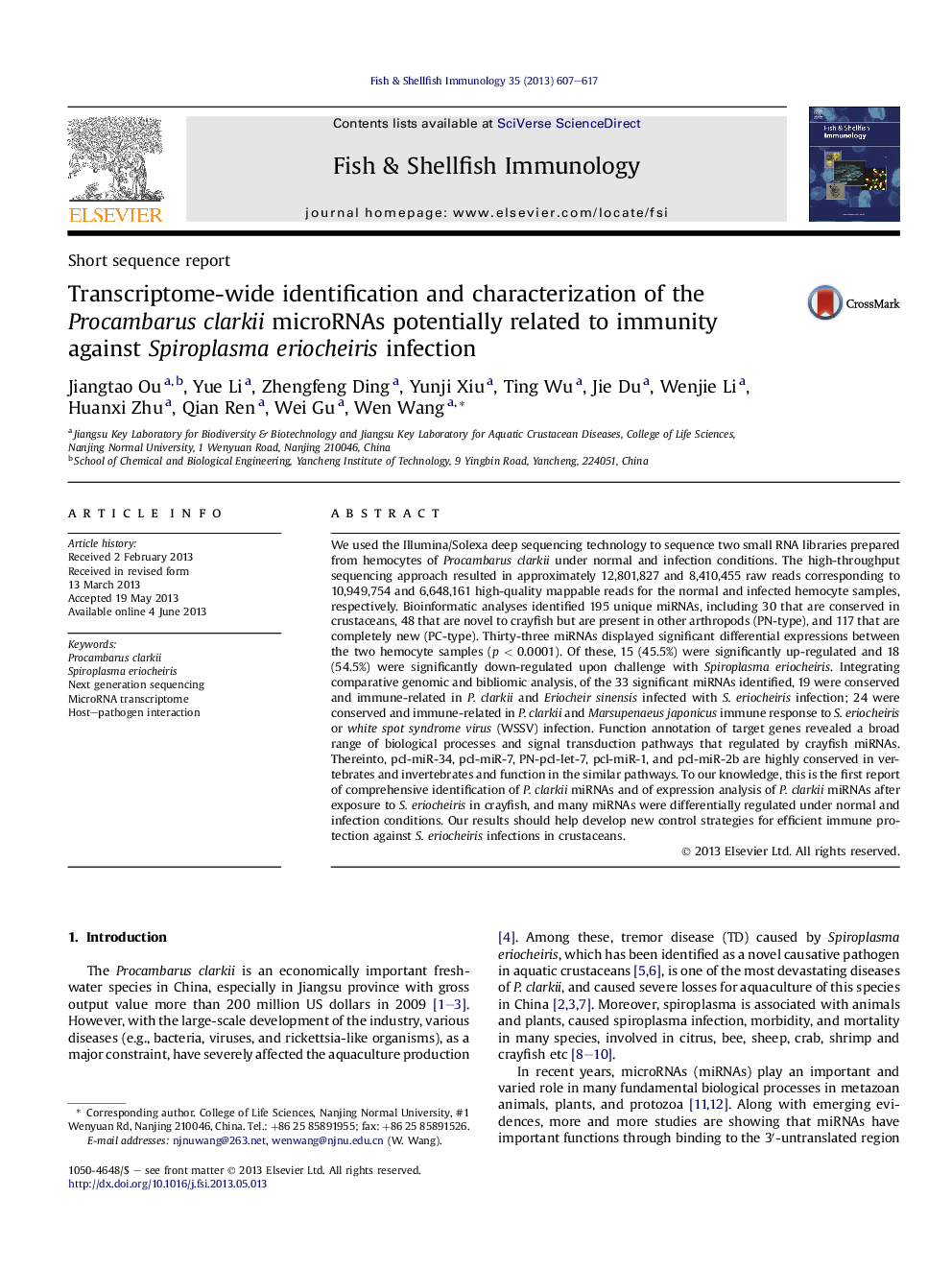| Article ID | Journal | Published Year | Pages | File Type |
|---|---|---|---|---|
| 2431796 | Fish & Shellfish Immunology | 2013 | 11 Pages |
•This is first report of crayfish microRNA identification by deep sequencing.•One hundred and ninety-five new miRNAs were identified from Procambarus clarkii.•Seventy-eight miRNAs were conserved in vertebrates and invertebrates.•Thirty-three miRNAs displayed significant differential expression.•Annotation of targets revealed a broad range of immune-related signal pathways.
We used the Illumina/Solexa deep sequencing technology to sequence two small RNA libraries prepared from hemocytes of Procambarus clarkii under normal and infection conditions. The high-throughput sequencing approach resulted in approximately 12,801,827 and 8,410,455 raw reads corresponding to 10,949,754 and 6,648,161 high-quality mappable reads for the normal and infected hemocyte samples, respectively. Bioinformatic analyses identified 195 unique miRNAs, including 30 that are conserved in crustaceans, 48 that are novel to crayfish but are present in other arthropods (PN-type), and 117 that are completely new (PC-type). Thirty-three miRNAs displayed significant differential expressions between the two hemocyte samples (p < 0.0001). Of these, 15 (45.5%) were significantly up-regulated and 18 (54.5%) were significantly down-regulated upon challenge with Spiroplasma eriocheiris. Integrating comparative genomic and bibliomic analysis, of the 33 significant miRNAs identified, 19 were conserved and immune-related in P. clarkii and Eriocheir sinensis infected with S. eriocheiris infection; 24 were conserved and immune-related in P. clarkii and Marsupenaeus japonicus immune response to S. eriocheiris or white spot syndrome virus (WSSV) infection. Function annotation of target genes revealed a broad range of biological processes and signal transduction pathways that regulated by crayfish miRNAs. Thereinto, pcl-miR-34, pcl-miR-7, PN-pcl-let-7, pcl-miR-1, and pcl-miR-2b are highly conserved in vertebrates and invertebrates and function in the similar pathways. To our knowledge, this is the first report of comprehensive identification of P. clarkii miRNAs and of expression analysis of P. clarkii miRNAs after exposure to S. eriocheiris in crayfish, and many miRNAs were differentially regulated under normal and infection conditions. Our results should help develop new control strategies for efficient immune protection against S. eriocheiris infections in crustaceans.
